Italians love their salads. There is always a salad at the family meal.
A salad isn’t just a lettuce salad though. Tomato salads, broccoli salad, potato salad (no mayo over here), zucchini salad, yada yada, baccala salad. We often consider marinated and pickled veggies a salad when we’re in a pinch. And yes, even something like Hitchcock Farms’ Broccoli burratta recipe could technically be a salad. If you think hard enough.
Here I have recreated a popular salad from my childhood. Broccoli salad was one of my Mom’s greatest hits if you ask me! I added cauliflower this time, along with the greens that surround the head. I also use scallions instead of red onions because that’s one of the only ways I can get onions past Eric. Feel free to add more or change up the onions if you’d like!
This salad is sooooo easy, but a little laborious if you make a lot at once. I say that because you can only fit so much into the steamer basket and have to steam the veggies in batches. Other than that, it’s the easiest thing, and tastes so delicious! To save time, try this recipe with one head of broccoli or cauliflower. Just divide the dressing recipe, or make the whole batch of dressing and save some in a jar for salads during the week.
The steaming and chilling process of the broccoli and cauliflower is great for meal prep. You can use this steamed broccoli and cauliflower in any dish to help save time during the week.
You should always blanch or steam cauliflower for dip platters and party trays…no one likes a dry crumbly cauliflower; that’s why there’s always cauliflower on the tray! Steam it lightly and you’ll see them start flying off the tray. One trick for steaming cauliflower, and retaining its bright white color, is to add lemon juice or vinegar to the water instead of salt. The salt can make it slightly yellow. It is one of the only veggies that benefits from an acid in the water. 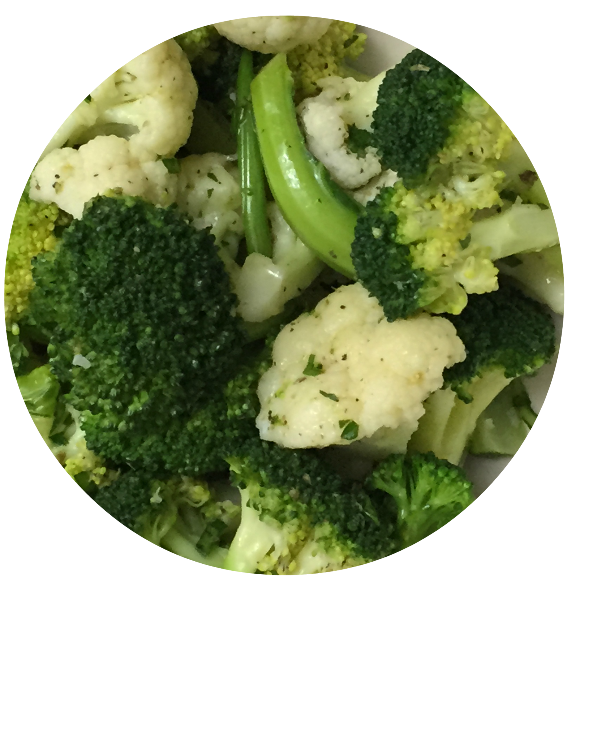
Quickly, before I hand over this simply delightful salad recipe, I must drop a little longevity kitchen knowledge:
Broccoli is one rapidly-aging beauty. What I mean by this is broccoli’s nutrients vanish into thin air every day that passes after harvest. It’s a darn shame I tell you! I wish everyone could grow broccoli in their yards year round, or have a farmer on speed dial. BUT, that’s not gonna happen.
I’ll keep it simple. NEVER buy broccoli that is pre-cut, or unwrapped. It’s basically just fiber you’ll get with the pre-cut stuff. So if you love broccoli that much, you are in a massive hurry, and aren’t going for nutrients, then fine. Buy the bagged pre-cut stuff. But other than that, it literally retains almost zero nutrients. Just days after harvest the broccoli can lose 50-75% of it’s nutrients. Sad, I know.
Look for broccoli that is dark green on top with tight florets. It should be wrapped in plastic, and have no yellow or pale florets. The stem should be bright green, and the bottom of the stem should be moist and flat, with no pocked holes.
Call your grocery store and ask when the broccoli comes in. Buy it that day, and steam it right when you get home. This will preserve the nutrients. If you have a farm or farmers market you visit, call in advance if possible and ask about the day they harvest the broccoli. Also ask if they chill it immediately after harvest. This is key to obtaining the most nutritious broccoli with all the anti-cancer properties we love.
Don’t worry as much about cauliflower. It doesn’t have as rapid of a respiration rate, and we can relax a little with that one.
So call that grocer, buy that broccoli, and let’s get steamin’!
This recipe works great with asparagus, potatoes, and green beans. In the summer you will love to try this with tomatoes, potatoes, and green beans all together. That will be great with some red onion. Tell me about your favorite combinations!


- 3 small heads organic Broccoli
- 1 medium head organic Cauliflower
- 1 Clove of Garlic, minced (10 minutes or more before using. This activates the anti-cancer properties)
- Juice of 1 lemon, 3 Tbsp Measure (zest if organic, and desired)
- 2 Tbsp Red Wine Vinegar
- 1 sliced Scallion
- 1 teaspoon dried oregano, or 1 Tbsp minced fresh
- 2 Tablespoons fresh parsley, minced
- 1 Tablespoon + 1 teaspoon fine sea salt
- 1 ½ teaspoon fresh ground black pepper
- ½ Cup Extra Virgin Olive Oil
- Prepare a steamer basket and pot of salted water for steaming. Get a large bowl filled with ice water to chill the veggies after steaming, and gather other tools such as a timer, a large slotted spoon, and a strainer.
- Clean and chop cauliflower into large florets, the size of about 2 bites.
- If the cauliflower greens are in good shape, cut the green stems/leaves into 2 inch long pieces, no wider than ½ inch. You may have to cut the stems lengthwise to make thinner pieces.
- Prepare the broccoli florets as well. Keeping them the same size if possible.
- Steam the Cauliflower florets for 3 minutes, in a single layer and in batches, using a timer. It helps to steam only pieces of the same size.
- Immediately remove the steamed cauliflower and transfer to the ice bath (do not steam more than 4 minutes or most nutrients will be lost). When the next batch is steaming, move the chilled cauliflower to the strainer you’ve set aside to use.
- Once all the cauliflower is steamed, you may start the cauli stems and greens. The stems might only take 2 minutes to steam, 3 minutes max.
- Repeat the steaming and chilling process with the broccoli.
- Now you will assemble the dressing. Start with a large bowl, big enough for all the veggies, and room to mix. Add the garlic, lemon juice, and red wine vinegar, scallions, herbs, and spices. Everything but the oil. If you would like the onion and garlic flavor then you may move on to the next step immediately. If you would like to calm the pungent flavors of the onion and garlic, let this mixture sit for 5 minutes or more.
- To finish the dressing, slowly stream in the oil while whisking constantly. This will create a nice thick dressing and make each bite of the salad more consistent in flavor. Your dressing will taste salty, but that is what we want! Once you add the veggies, that will no longer be the case.
- Mix in your veggies now, tossing numerous times to mix well.
- This salad keeps in the fridge for a week.
- If you don't have a steamer basket you may blanch in salted boiling water for 2-3 minutes, but the result will be much less nutritious.
- If you are eating the salad right away, this should be the proper seasoning. You may need more olive oil, lemon or salt if you had larger heads of broccoli or cauliflower.
- If you are eating this salad later, refrigerate, and remove 10 minutes prior to eating for the best flavor, and also to let the olive oil come to the right consistency.
- The veggies absorb the dressing the longer they sit, so you may feel the need to add more salt, oil, or lemon/vinegar, along the way.
- This salad is great to eat by itself, or you may add it to any salad greens with just a little extra oil and vinegar for a quick side salad!
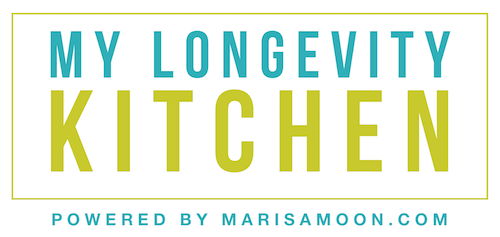
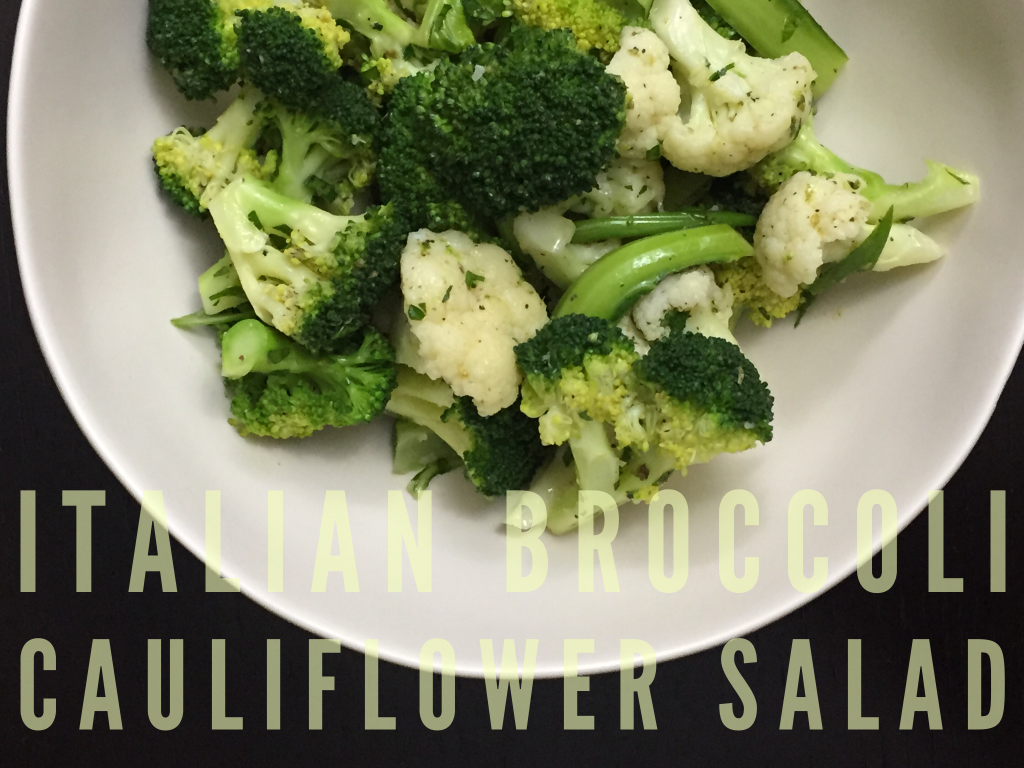




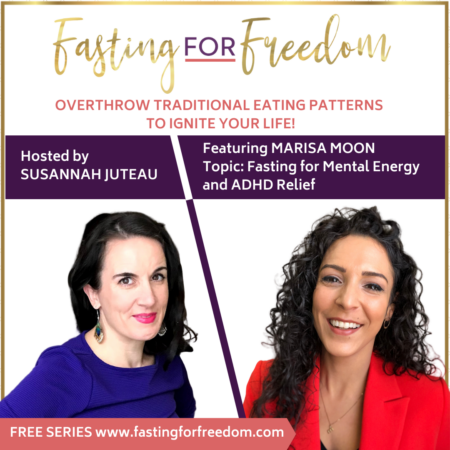
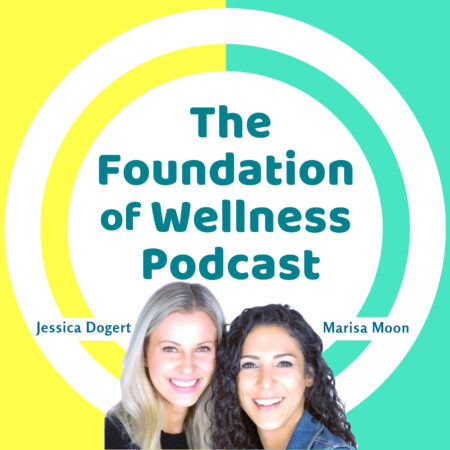



I haven’t heard that about the 50-75% nutrients disappearing either, but if that is the case – then frozen is the next best thing? (Not for a dish like this necessarily, just in general)
Hi! Thank you for reading my post!!!
Here is a quote from the book “Eating on the Wild Side: The Missing Link to Optimal Health”, by Jo Robinson:
“Frozen broccoli is convenient, but it less nutritious than fresh broccoli. Like all vegetables, broccoli contains natural enzymes that must be destroyed before it is frozen or the flavor and overall quality will degrade. The standard way to deactivate the enzymes is to steam or boil the vegetable for a few minutes, a process called blanching. Recent tests have shown that blanching broccoli destroys a third of it’s glucosinolates before it even hits the freezer. ”
That being said, I would still agree that if you had to choose between supermarket fresh broccoli and frozen, you would still get more nutrients from the frozen broccoli! Especially if you consider the information I posted in the comment before you. Check my reply to the comment below, and let me know if you have any more questions.
You can buy the book here: http://www.amazon.com/Eating-Wild-Side-Missing-Optimum/dp/0316227935
I love a good broccoli salad with a lil feta and a nice homemade dressing.
So, I was curious about the nutrient stuff. When you say, “Just days after harvest the broccoli can lose 50-75% of it’s nutrients.” do you have any links to references I can check out? Cause that is seriously alarming.
Thanks so much!
Sarah
Sarah, I am still getting used to this site, and I missed your comment. Thanks for your patience!
I have been reading a book by Jo Robinson, called “Eating on the Wild Side: The Missing Link to Optimum Health” (actually listening to an audio version). http://www.amazon.com/Eating-Wild-Side-Missing-Optimum/dp/0316227935
I have heard her interviewed before, and that is how I found the book. Here is an excerpt from her interview with Chris Kresser:
“And some plants burn it up much more rapidly than others, and it turns out that the ones that are most highly recommended for health – and this is asparagus and broccoli and kale and spinach, mushrooms, arugula, lettuce – they respire so rapidly that within two or three days of harvest they might have half or even less of the antioxidants…This one study that looked at the difference in the total nutrient content of broccoli when it’s first picked and when it’s in the supermarket an average of about seven weeks later, it found that after that seven weeks they fed it to rats in all these different models of cancer and cardiovascular disease and found out that at the end of that seven weeks, which is when we buy it from a supermarket, it had lost its ability to cancer and reduce the risk of heart attack and stroke. It’s scary.” You can find the interview here: http://chriskresser.com/could-eating-wild-be-the-missing-link-to-optimum-health
In her book she refers to a study, and she states, “As a 2003 Spanish Study revealed, food scientists from Murcia, Spain purchased freshly harvested broccoli and then exposed it to the same conditions that occur during normal storage and transport. For one week the broccoli was stored in a climate-controlled warehouse that provided the ideal humidity and temperature conditions. Then, for the next 3 days, it was exposed to the warmer and dryer conditions of at typical supermarket. At the end of those 10 days, the broccoli had lost more than 80% of its glucosinolates. 75% of a class of phytonutrients called flavonoids, and 50% of it’s Vitamin C. ”
Sad, isn’t it? Looks like we really need to know our farmers or grow it ourselves. Otherwise we can just enjoy it anyways because it tastes so good!
Thanks for reading my post!!